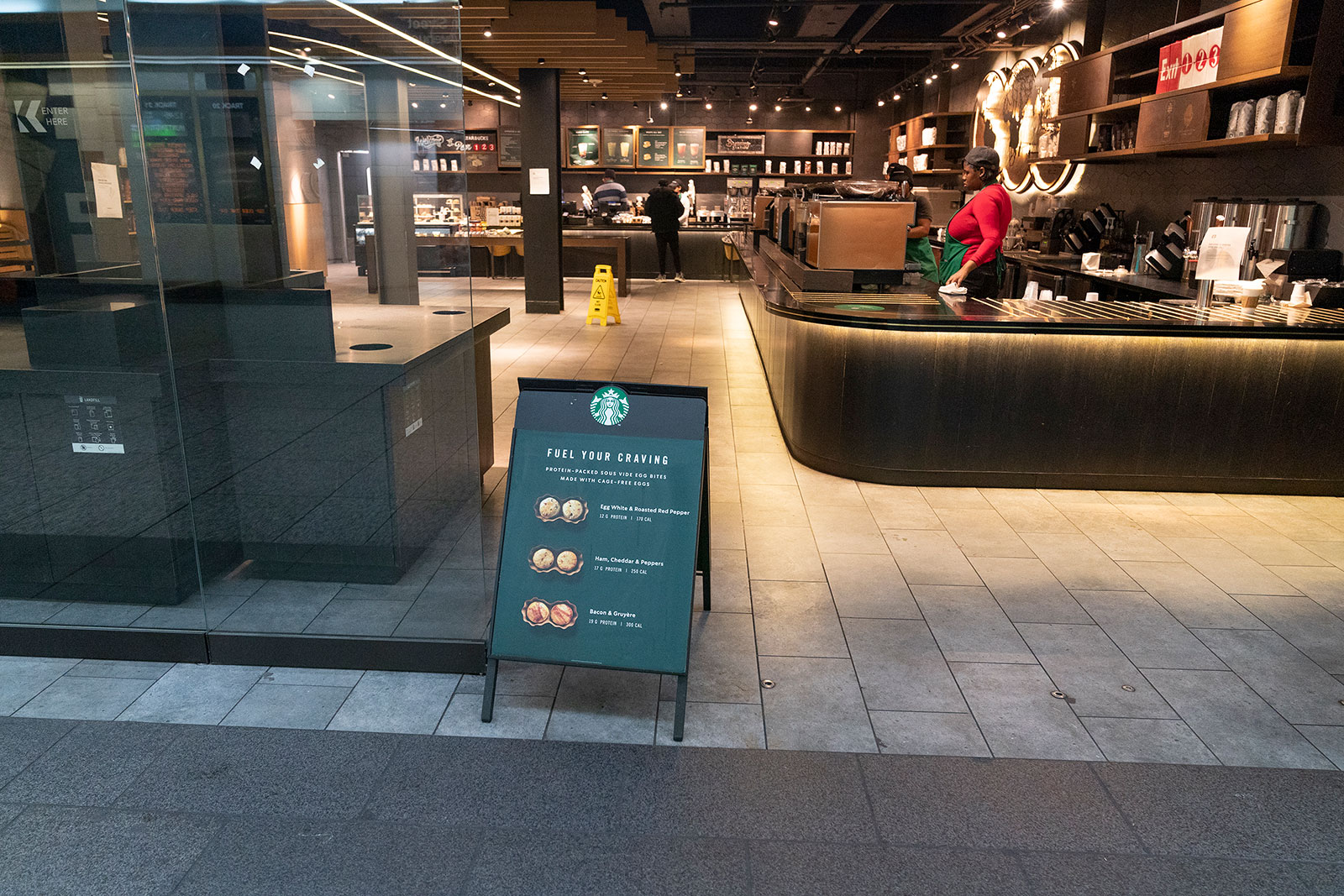The journalists at BuzzFeed News are proud to bring you trustworthy and relevant reporting about the coronavirus. To help keep this news free, become a member and sign up for our newsletter, Outbreak Today.
All week long, Starbucks employees got sick, and Starbucks stores stayed open.
On Saturday, March 14, a Starbucks employee in northern Washington developed a fever and dry cough and had trouble breathing. After a night of cleaning by staff, the store opened back up for business as usual.
On Monday, March 16, an assistant store manager in Georgia kept working despite a fever and a sore throat. Another employee mentioned that his wife was showing coronavirus symptoms. He was told to come in anyway.
That same day, an employee in Maine who told his manager he wasn’t feeling well was instructed to keep working because he “couldn’t be thinking every sniffle was corona, or else we would have to think everyone might have it,” he recalled.
On Thursday, March 19, a Starbucks employee in western Washington told her manager that a doctor said she probably had COVID-19, the disease caused by the novel coronavirus. The store stayed open.
That same day, an employee in eastern Pennsylvania with a bad cough and no paid sick leave poured coffee and mixed drinks behind the counter as a dozen or so customers waited for their orders.
And by Friday, March 20, three employees at a Starbucks in Oregon had come down with flulike symptoms and called in sick. One said she first felt under the weather a day after “not one but two customers coughed on me,” she told BuzzFeed News, requesting her name and city remain anonymous for fear of getting fired. “I went to the ER because I felt like literal death. I was given the diagnosis of ‘mild respiratory infection’ just by looking at me. I had a fever of 104 degrees, trouble breathing, and a severe sore throat.” None of her coworkers were tested, and neither was she. Her store remained open.
As the coronavirus pandemic mushroomed into a full-blown crisis, and health officials pleaded with Americans to stay away from each other to slow its spread, one of the nation’s largest employers let crucial time slip away before it took decisive action. Muddled sick pay rules left many workers to choose between coming to work sick and going without pay. Decisions with major public health implications fell into the hands of local branch managers. Meanwhile, employees kept falling ill, and customers kept showing up in droves, including some who seemed sick. On Saturday, Starbucks moved to limit sales at most locations to drive-thrus only, and to offer 30 days paid “catastrophe” leave to all employees. But by then, an untold number of employees and customers might already have been exposed.
An ongoing BuzzFeed News investigation, based on internal communications at more than a dozen companies and interviews with hundreds of service workers, has found that many major retailers have kept stores open without clear plans for how to operate during the pandemic, forcing anxious hourly employees to work with insufficient safety protocols and minimal guidance.
Are you a retail employee still working during the coronavirus outbreak? We'd love to hear your story. Reach out at albert.samaha@buzzfeed.com.
Few employers have left more staffers on the front lines than Starbucks; interviews with more than 70 of them reveal an atmosphere of chaos, fear, and confusion at branches around the country. Fourteen Starbucks employees in eight states told BuzzFeed News that they recalled serving customers who were coughing, some within a few feet of them. Sixteen Starbucks employees in 10 states said they were unable to get enough paid sick leave for a two-week self-quarantine, even if they exhibited symptoms similar to a COVID-19 infection or lived with someone who showed symptoms.
Many Starbucks employees who spoke with BuzzFeed News said that, like other Americans, they were unable to get tested for the coronavirus, meaning they can’t know for sure whether they were infected. But their experiences show how the decisions of a company that employs 220,000 people in the US have had far-reaching consequences in the midst of a virus accelerating faster than most public health systems can keep up with.
A Starbucks spokesperson told BuzzFeed News the company made the best of an unprecedented and rapidly changing situation. “We’re learning as we go,” the spokesperson said. “Information on this virus is coming in every single day. We're constantly listening to our partners, and once we were able to understand some of the feedback and some of the challenges they faced, we took actions.”
The company follows guidelines set by the CDC and local health officials, the spokesperson said. “In the instances we believe someone or a partner has been exposed, we close the store for a deep clean,” he said, though he was unable to provide specific examples or an estimate of how many stores have been deep-cleaned. The employees who spoke with BuzzFeed News said that any cleaning was done by staff members using the store’s standard disinfectant sprays and wipes.
Starbucks declined to comment on specific incidents in this story without knowing more details about their locations, which BuzzFeed News declined to provide in order to protect sources, nearly all of whom spoke on the condition of anonymity out of fear of reprisal.
Starbucks is one of the wealthiest retailers in the world; it has gained a reputation for granting its workers higher pay and better benefits than what's offered by most of its industry competitors. Employees are called “partners” because they are given shares of the company when hired. They receive tuition assistance for college and can apply for hardship grants in times of financial strain.
The company stands at the forefront of an industry that employs a vast share of the country’s millions of hourly and minimum-wage service workers, many of whom were already living paycheck to paycheck with less than a week of paid sick leave. During the pandemic, many have had to balance the thought of a missed paycheck against the thought of infecting a family member.
Some companies, including Apple and Nike, moved quickly, closing all locations by March 15 and shifting all sales to delivery. Others, such as Ikea, Nordstrom, Gap, Spencer Gifts, and Zumiez, shut down their stores by the end of last week, heeding the calls of concerned employees. The stores that remain open this week are those that deem themselves “essential” — grocery stores that feed, pharmacies that treat, shipping operations that deliver supplies to doorsteps, as well as a host of retailers serving the needs of newly homebound consumers: electronics from Best Buy; video games from GameStop; crafts from Michaels; home office supplies from Office Depot and Staples; home renovation supplies from Home Depot, Lowe’s, and Sherwin-Williams; clothes from Dillard’s; books from Barnes & Noble; and fabrics from Jo-Ann Stores.
Starbucks said the actions it has taken in the last few days will protect its workforce. At nearly all branches, the café lobbies are now closed, with orders served at drive-thru windows instead of inside. The company’s new expanded catastrophe pay covers anyone who feels unsafe for any reason for up to 30 days. Until April 19, those still willing to work shifts will be paid $3 more than their normal hourly wage.
Many employees who spoke with BuzzFeed News said they supported the new measures but questioned why, if higher-ups felt the measures were necessary now, they couldn’t have implemented them earlier. “To be entirely honest it felt too little, too late and like a backtrack from the public backlash they were starting to get,” said the employee from northern Washington.
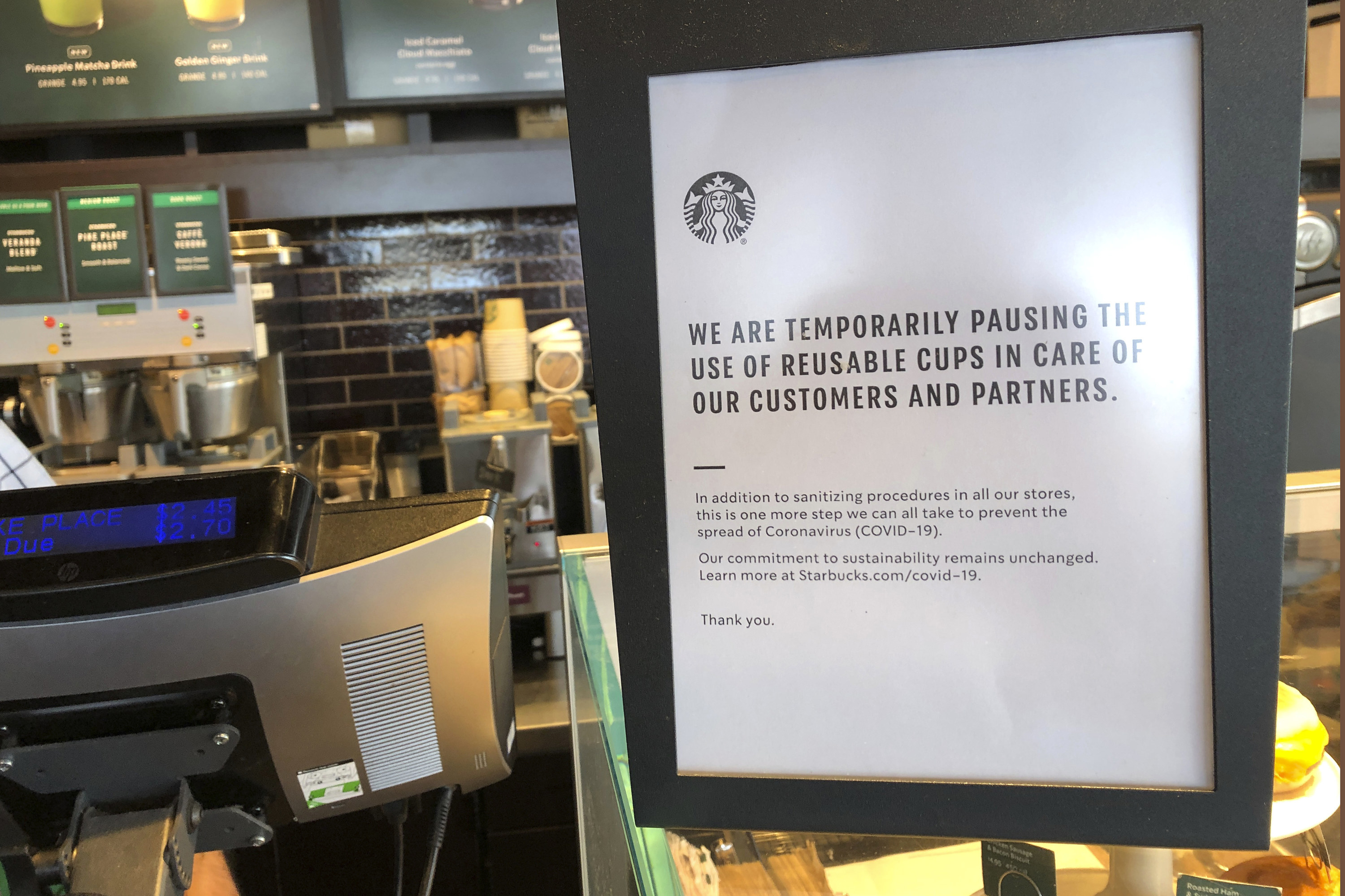
On Wednesday, March 4 — a week before the World Health Organization declared a global pandemic, when there were fewer than 250 confirmed COVID-19 cases in the US — a Starbucks employee in Louisiana arrived at work feeling unwell. She felt warm, had a cough, and found herself “struggling to breathe as I handled cash, drinks, and food for the next five hours,” she told BuzzFeed News. Her manager encouraged her to finish her shift.
After work, she went to an urgent care clinic, where she was told she probably had the flu. She wasn’t tested for COVID-19 — at that point, only five tests had been conducted in Louisiana. The employee used the rest of her paid sick time and returned to work the following week. “We did nothing as a store to report it,” she said. “Nothing changed — me and 15 coworkers crammed into a 1,000-square-foot space for hours, just trying to get the bills paid.”
Though the pandemic had yet to spur widespread action in the US, Starbucks had dealt with the crisis in China, the company’s fastest-growing market. In a March 5 press release, it boasted that in late January it had been “among the first major brands to proactively close their retail stores.” Starbucks’s top executive in China explained the move: “We had to quickly decide how we were going to lead.”
That first week of March, as a Seattle employee tested positive for the virus and confirmed cases in the US reached 400, Starbucks started to take action in the US, banning reusable cups and instructing corporate management to do their jobs remotely.
On the morning of Monday, March 9, as confirmed cases in the US neared 1,000, vice presidents and district managers working from home held a series of regional conference calls with store managers around the country to issue new cleaning guidelines, according to four store managers in three states. They mandated that baristas, rather than customers, add milk and sugar. Employees were told to sanitize door handles, card readers, and bathrooms every hour and to wear gloves to handle cash transactions or wash their hands after each one. An automated voice in their headsets would remind them to wash their hands every 30 minutes.
On the conference call for the northwest region, one store manager asked if they could put up signs asking people not to enter the store if they had symptoms, according to two Washington managers on the call. But two high-level executives on the line rejected the idea, saying they didn’t want to single out sick people.
On March 11, as confirmed US cases reached 1,700, Starbucks announced it was expanding its “catastrophe pay” policy — a two-week paid leave reserved for “a natural disaster or unusual event,” according to the company handbook — to include anyone who is “diagnosed with or exposed to COVID-19,” as well as people with underlying conditions and those who had recently traveled to China, South Korea, Iran, or Italy.
It seemed like good news. But for a dozen employees who spoke with BuzzFeed News, it quickly led to a dead end. They said they were told that those without the required underlying conditions or travel history were only eligible if they or someone they were exposed to had been tested for COVID-19 — even though tests are “damn near impossible to get,” in the words of one employee. Without a test, an employee who had symptoms was eligible for just three days of catastrophe pay.
“After this week, I either go back to work where I have little to no protection, I take unpaid leave of absence, or I quit my job.”
The company distributed a flowchart to employees, which instructs those who are ill but can’t get tested “Do Not Go to Work” until they are free from symptoms for 24 hours. “If additional time is needed” beyond the three days of catastrophe pay, the chart encourages employees to use regular sick days. But dozens who spoke to BuzzFeed News said they had less than a week’s worth of paid sick leave available, if any; and people who have worked for the company for less than a year generally have no vacation time to use.
An employee who had recently returned from a cruise to the Bahamas and the Dominican Republic said she was rejected for paid leave because those countries weren’t on the list of “level three” hot spots — so she continued to go to work. Another employee who said she was immunocompromised said she was rejected because she wasn’t able to schedule an appointment with a doctor. She, too, continued to go to work. Two other employees said they were unable to qualify even though close relatives they live with showed symptoms. Both chose to self-isolate without pay.
When an employee in Canada informed his manager he’d been exposed to someone who’d been ordered to quarantine, the manager sent him home for the day and ordered the entire store cleaned with bleach and disinfectant wipes. Three hours later, the employee said, the manager called to tell him he should return to work for his next shift. He called the human resources hotline, which was backlogged with a wait time that he estimated lasted two hours, only to be rejected for paid leave for lack of a test.
Others didn’t even bother to try.
An employee in Texas who has cystic fibrosis decided not to immediately apply for catastrophe pay because his doctor told him the pandemic would likely continue to spread over the next few weeks, he said. He decided to save those paid leave days “in case the situation got worse.”
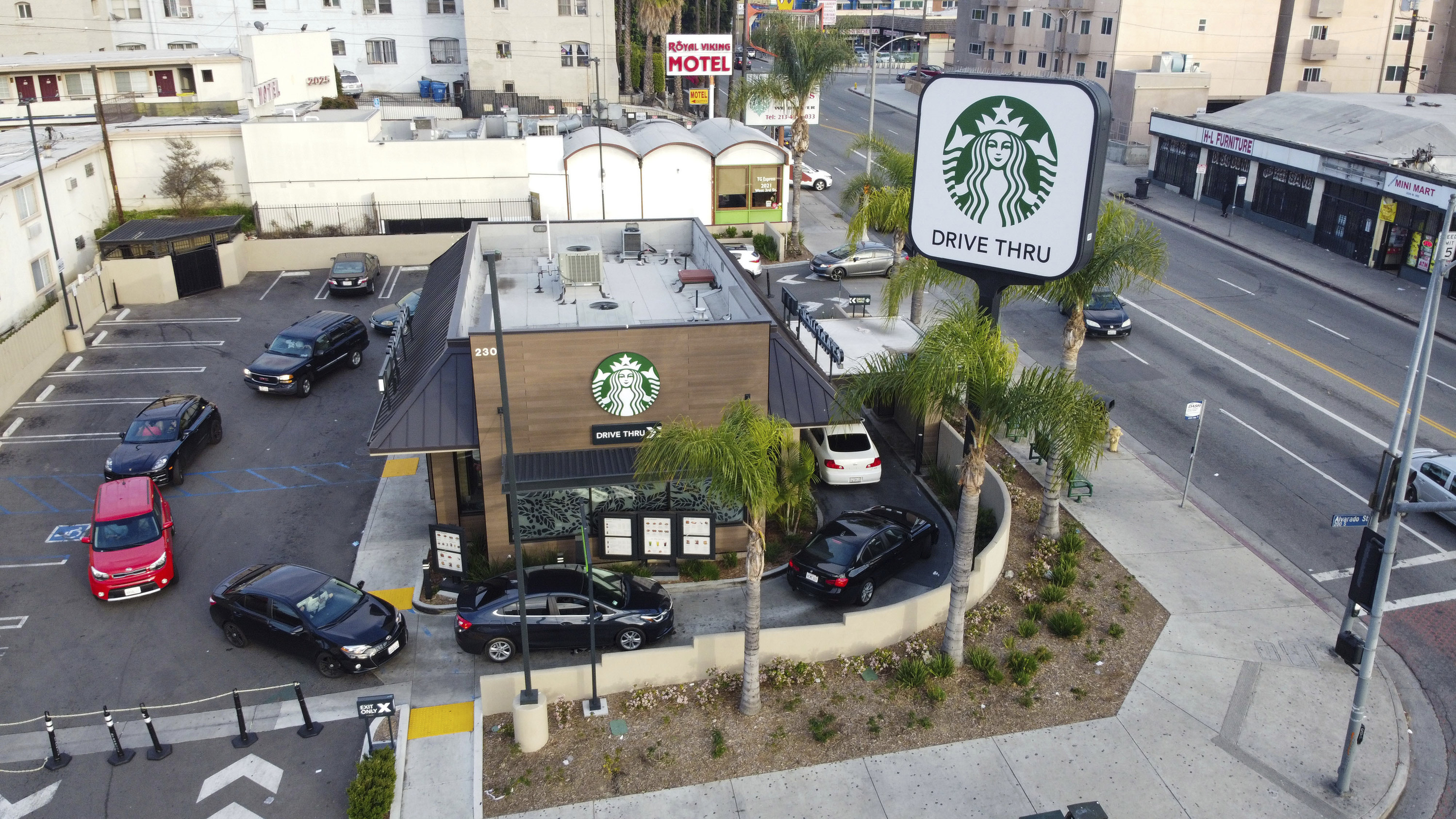
On Sunday, March 15, as confirmed US cases surpassed 4,600, Starbucks informed store employees that the company was closing its seating areas and serving only to-go and drive-thru orders. For many branches, the only visible changes were the chairs stacked upside down on tables behind the line of customers snaking to the door to pick up orders. An employee in Chicago said his branch served more than 50 people an hour during peak commute times that week, and one in Manhattan said her store still served “90%” of its usual customers.
“Our lobby was still full,” an employee in Oklahoma told BuzzFeed News that week. “We have 30 to 40 people in the store at one time, and we were being laughed at or berated for our precautions.”
Asked why Starbucks didn’t close its cafés earlier, the company spokesperson said the number of customers showing up caught the company off guard. “That we would have a group of people coming into our lobby was surprising,” the spokesperson said.
At a branch in a suburb in southern Washington state, regular customers arrived at their usual times on the morning of March 15. Among them was a caregiver at a retirement community down the street. She came in so often that she “formed a bond” with familiar faces behind the counter, said a manager at the branch.
Some miles north, at a retirement home in Kirkland, 29 people and counting had died from COVID-19. In Seattle, where Starbucks is headquartered, more than 300 people had tested positive. But when the store manager clocked in that morning, his southern Washington suburb still had zero known cases.
Store hours were unchanged, and no signs indicated any new safety protocols. About half a dozen employees behind the counter poured coffee, stirred drinks, and served pastries while about five customers stood in line and about five more awaited orders. The caregiver arrived in the early afternoon, chatting with baristas as she handed her credit card to the cashier, standing a few feet away. That morning, the caregiver said, three patients in her nursing home had tested positive for the coronavirus, the first confirmed cases in the county.
She continued to drop in every day for the rest of the week, the manager said.
On Monday, March 16, as confirmed cases in the US hit 6,400, a 33-year-old Starbucks employee in Arizona who lived with both of her elderly parents asked her manager if she could wear a mask to work.
During the conversation, “my manager looked at me and goes, ‘I think I had corona,’” the employee said; the manager recalled feeling sick during the first week of March but kept coming in to work.
Across the country, tens of thousands of people had been laid off, and the Arizona employee felt fortunate to still earn income at a company that also paid for college classes she had enrolled in. But she only had 22 hours of combined vacation and sick time available, she said, and her manager told her she didn’t qualify for catastrophe pay. She felt she had “no choice but to continue working.”
“I am not afraid of dying; I just don't want to spread it to my loved ones.”
Employees in three other states described a similar predicament, living with high-risk relatives while dependent on Starbucks paychecks to make ends meet.
“I either go to work and risk infecting my vulnerable father or I stay home and isolate and receive no pay,” an employee in Massachusetts told BuzzFeed News on Wednesday, March 18, as the number of confirmed US cases reached 13,700. “I have no symptoms, but a coworker reported feeling ill on Monday and called out sick.”
The employee at the Arizona branch handled the drive-thru, which had longer lines than usual. “People would cough in their hands and hand me money or cough in my face,” she said. “That freaks me out.”
She wore gloves but didn’t have time to change them after every transaction because the customers lined up faster than they could make drinks. Behind her in the café — where chairs were stacked, tables were moved to the side, and posted signs noted that the seating area was closed — customers “would just be in our lobby standing and holding impromptu meetings,” she said, some for as long as 20 minutes after they’d gotten their orders.
At the start of the week of March 16, her branch had just a single bottle of hand sanitizer left, stored on the manager’s desk in the back room. She and her coworkers didn’t know when the next shipment of cleaning supplies would come.
Dozens of Starbucks employees around the country described similar experiences.
An employee in California told BuzzFeed News on March 18 that his branch “has yet to receive any of the hand sanitizer that was meant to arrive over a week ago.” At a Starbucks kiosk in a Kroger supermarket in Kentucky, “the store has been out of hand sanitizer for about a week,” an employee said on March 21, and workers were using dish soap to wipe down counters.
Others recalled customers who “don't stand more than a few feet apart,” “lick their fingers before handing us cash,” “burst out into a coughing fit all over my barista on register,” and are generally “acting as if the virus doesn’t exist.”
Many Starbucks employees expressed guilt at the company’s role in contributing to the pandemic’s spread by promoting “a feeling of normalcy,” as a Georgia employee put it. Employees in six states worried that many of their in-store customers were elderly people who are at higher risk of severe complications from COVID-19.
“Our baristas and shift supervisors are scared and are turning to me for guidance, but I am scared as fuck.”
“Several people thanked us for staying open and giving them a reason to go out,” an employee in Northern California said.
Face masks have been a contentious issue. The Starbucks spokesperson said the company did not prevent employees from wearing them but, citing CDC recommendations, added that they should be saved “for people who need them.”
Two store managers said their higher-ups directed them to discourage employees from using them. The employee in Texas who has cystic fibrosis had worn a mask at work the first week of March — before his manager told him to take it off, get a doctor’s note, and file a request with HR, he said. He did so but has yet to hear back.
When the Arizona employee asked her manager about wearing a face mask, she was met with silence and what felt like an uncomfortable look.
She decided to stay home after that, using the rest of her paid sick leave. She pulled her child from daycare, moved her parents to a relative’s house, and went into isolation with her husband. “After this week I either go back to work where I have little to no protection, I take unpaid leave of absence, or I quit my job,” she said.
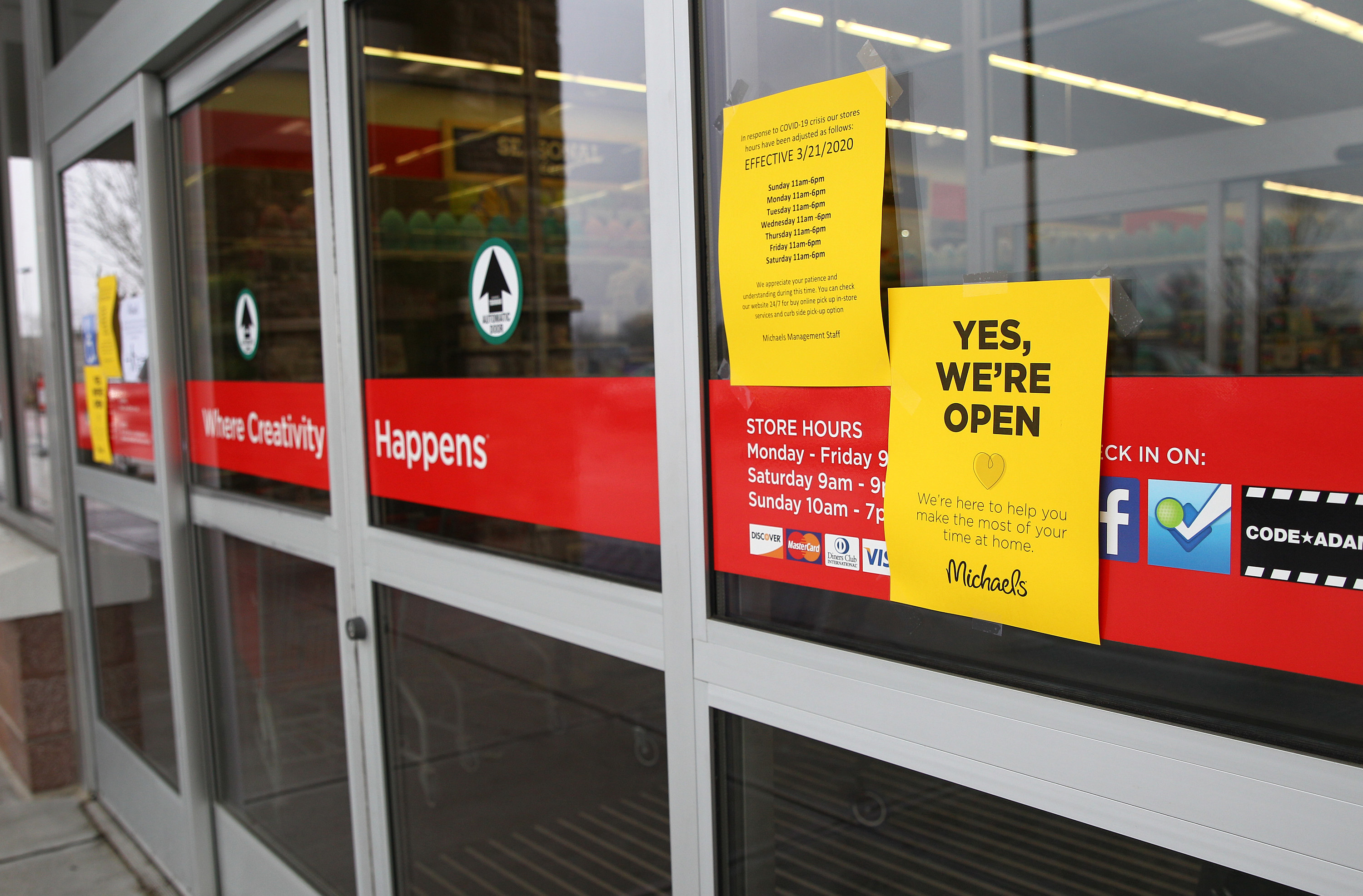
Many service workers at other retailers have faced the same dilemma over the past two weeks, as their employers stayed open while streets emptied, schools closed, and a substantial portion of the country’s population hunkered down at home working remotely.
Employees at Lowe’s received a memo noting that their “Spring Black Friday” promotion “is not going to change. Home Depot cancelled their Spring Black Friday so… GAME ON!!!” Lowe’s did not respond to a request for comment.
At GameStop, which implemented curbside pickup late last week and has seen a surge of business, 14 employees told BuzzFeed News that the company has failed to provide gloves and cleaning solution. After local authorities in some cities tried to close the stores, executives provided employees with a “letter to law enforcement” stating that their products were essential because they “enhance our customers’ experience in working from home.” The company told BuzzFeed News in a statement that it was “taking aggressive actions, in an admittedly difficult environment, to quickly obtain additional cleaning supplies.”
Three employees at the sporting goods store Cabela’s told BuzzFeed News that the company wasn’t enacting any distancing protocols despite the rush of customers flocking to buy weapons — “well, more than 50 people at any given time waiting to get a gun all in one area,” one employee said. Cabela’s did not respond to a request for comment.
Across the country, many of the hundreds of service workers who spoke with BuzzFeed News — via phone call, text, and email — said they wanted their stores to shut down, even though they knew it meant they would likely go without income — many said they had nothing but vacation and sick days to hold them over.
Last week, employees at a Guitar Center in Los Angeles staged a walkout to protest their employer’s decision to stay open. In New York, where Guitar Centers were closed by state government order, employees were given four days of compensation and then had to use whatever vacation and sick time they had left before going without pay, they said. Employees at Michaels, which also shut down in New York, said they received nothing beyond their remaining paid time off. Guitar Center and Michaels did not respond to a request for comment.
“I am not afraid of dying; I just don't want to spread it to my loved ones,” said an employee at a Michaels that remains open. “My mother is over 65, and I don't want anything to happen to her when I come back home from work.”
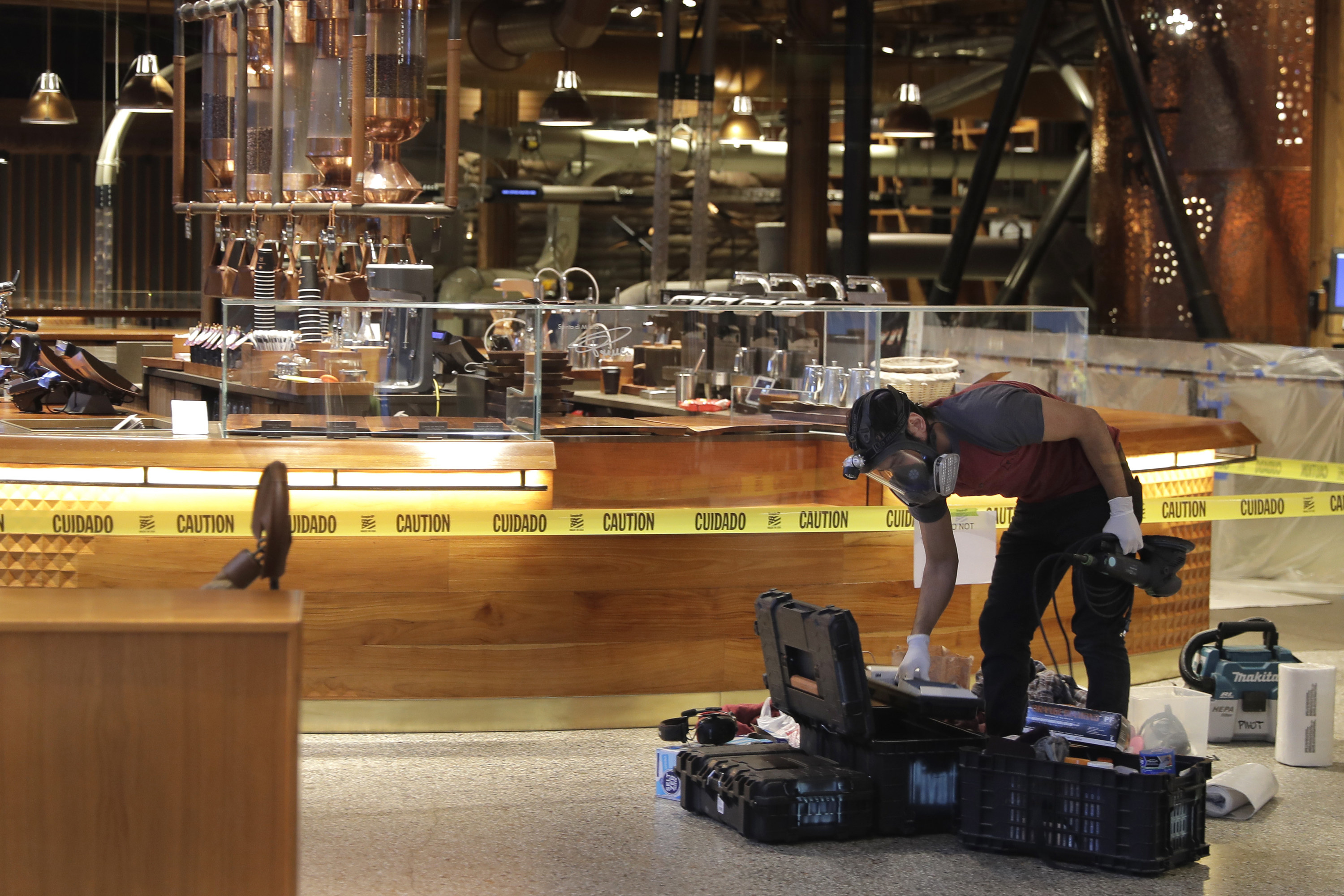
As the pandemic divides the world into those who work from home and those on the front lines, Starbucks store managers have found themselves increasingly caught between higher-ups demanding they keep shifts filled and employees hesitant to keep working.
“Our baristas and shift supervisors are scared and are turning to me for guidance, but I am scared as fuck,” a store manager in Northern California told BuzzFeed News on March 18. “I’ve cried every day since last Friday.”
When an employee at a neighboring branch received two weeks of catastrophe pay after getting tested for the virus, that branch’s manager asked the Northern California store manager if she could supply an extra worker to pick up the absent employee’s hours.
“I said, ‘Yes, I have a partner, but I am not sending anyone,’” she recalled. “Why is that store operating if a partner is getting tested? What if I sent a barista to cover that shift and my partner contracted the virus?”
“People would cough in their hands and hand me money or cough in my face. That freaks me out.”
When it comes to informing the public about employees diagnosed with COVID-19, Starbucks has said little. Though the chain announced on March 6 that a Seattle branch would close for “a deep clean” after an employee was diagnosed, it has not publicized any deep cleans or confirmed cases since then. Employees at branches in New York and California reported they had coworkers who were tested last week, though they were unaware of the results, and three others recalled sanitizing their entire stores after a coworker showed symptoms.
Other companies have also been discreet.
When a stylist at Amazing Lash Studio in Texas tested positive on March 16, the salon’s manager directed the receptionist to cancel that stylist's appointments “without telling people why she’s out of office,” the receptionist said. The salon didn’t close until Sunday, March 22. Amazing Lash Studio did not respond to a request for comment.
After an employee at a Trader Joe’s in Seattle tested positive, the company disclosed the news on its website for four days before removing the post because, a spokesperson explained to BuzzFeed News, "the store is safe again.” Though managers at two stores in New York informed workers last week about employees at their branches testing positive, Trader Joe’s didn’t announce the information publicly until after BuzzFeed News contacted the company about them.
At the Starbucks in northern Washington where an employee showed symptoms on March 14, the store manager asked staffers aware of the situation “not to tell anyone outside of who was there,” one employee said. “The district manager deemed the lack of test as a green light to stay open.”
Three store managers told BuzzFeed News that their bosses gave them discretion to temporarily close a store due to possible exposure but discouraged them from doing so without evidence of a test. “It puts an enormous responsibility on us,” one manager said.
The Starbucks spokesperson said this would have been against the company’s stated policy. “We've been consistent in what our approach has been: You don’t need a positive test to close down your store out of abundance of caution,” the spokesperson said. “We’re not cutting any corners."
Store managers thinking about closing their branch have had to weight the financial impact on their employees. At the branch in western Washington with the employee who was told by a doctor on March 19 that she probably had COVID-19, the store manager told staff in a group text message that he has “been wanting to hold out closing, to ensure all of our partners get paid.”
Employees at branches that have fully closed, including those in certain malls and buildings, have had to pick up shifts at other branches in their area, sometimes commuting as long as an hour. When her branch was shut down, a store manager in New York said she had trouble “finding placements for the more than two dozen employees in my care who can’t afford to be out of work.”
As state and local governments issued emergency directives minimizing human contact, it often fell to Starbucks store managers to determine how to abide by them.
In a Texas city prohibiting gatherings of more than 10 people, a store manager directed a few employees to stand outside when the line got long to keep from exceeding the limit. An employee at a California branch in a county under a shelter-in-place decree asked her manager if they should clear out the lobby or put up signs directing people to stand 6 feet apart. The manager replied that “it didn’t apply to us,” the employee said.
Last week, Starbucks executives informed store managers that it was expanding the catastrophe pay policy to cover anyone who obtained a doctor’s note recommending that they self-isolate. The company authorized store managers to submit employee requests directly to district managers, who oversee stores in a given region, on a “case-by-case basis,” according to the three store managers as well as eight employees who spoke with their bosses about the policy. The Northern California store manager said her district manager instructed her to use catastrophe pay “as sparingly as possible.”
It was up to store managers to decide whether to inform their staff of the policy change. BuzzFeed News viewed text messages from two managers telling their staff last week about the updated paid leave policies. But five baristas said their managers never informed them. Three said they only learned of the new standards when they asked their manager whether they might qualify for paid leave. And another said his manager told him that “employees are encouraged not to use” catastrophe pay “and that I really should refrain from it and just come to work as scheduled.”
The Starbucks spokesperson disputed that district managers would have pressured store managers to limit paid leave, saying those decisions would have been handled by human resources.
By Thursday, March 19, as confirmed US cases reached 19,000, some Starbucks employees had been approved for two-week paid leave without a test, even as many of their counterparts across the country still believed they needed a test to qualify. When BuzzFeed News contacted Starbucks last week to inquire about the policy shift, the spokesperson claimed that the policy had never changed, that tests had never been a requirement, and all an employee ever needed was a doctor’s note recommending self-isolation for any reason.
“From the very beginning we’ve been consistent about this,” the spokesperson said. “For us to tell a partner that you need to have a confirmed test wouldn’t be reflective of who we are.”
The spokesperson referred to the “COVID-19 Decision Logic” flowchart distributed to the workforce. However, the flowchart stated that access to a test was required for employees to receive catastrophe pay; in response to this, the spokesperson said that any employee who showed symptoms should have been able to “go to a doctor and get some level of a diagnosis.”
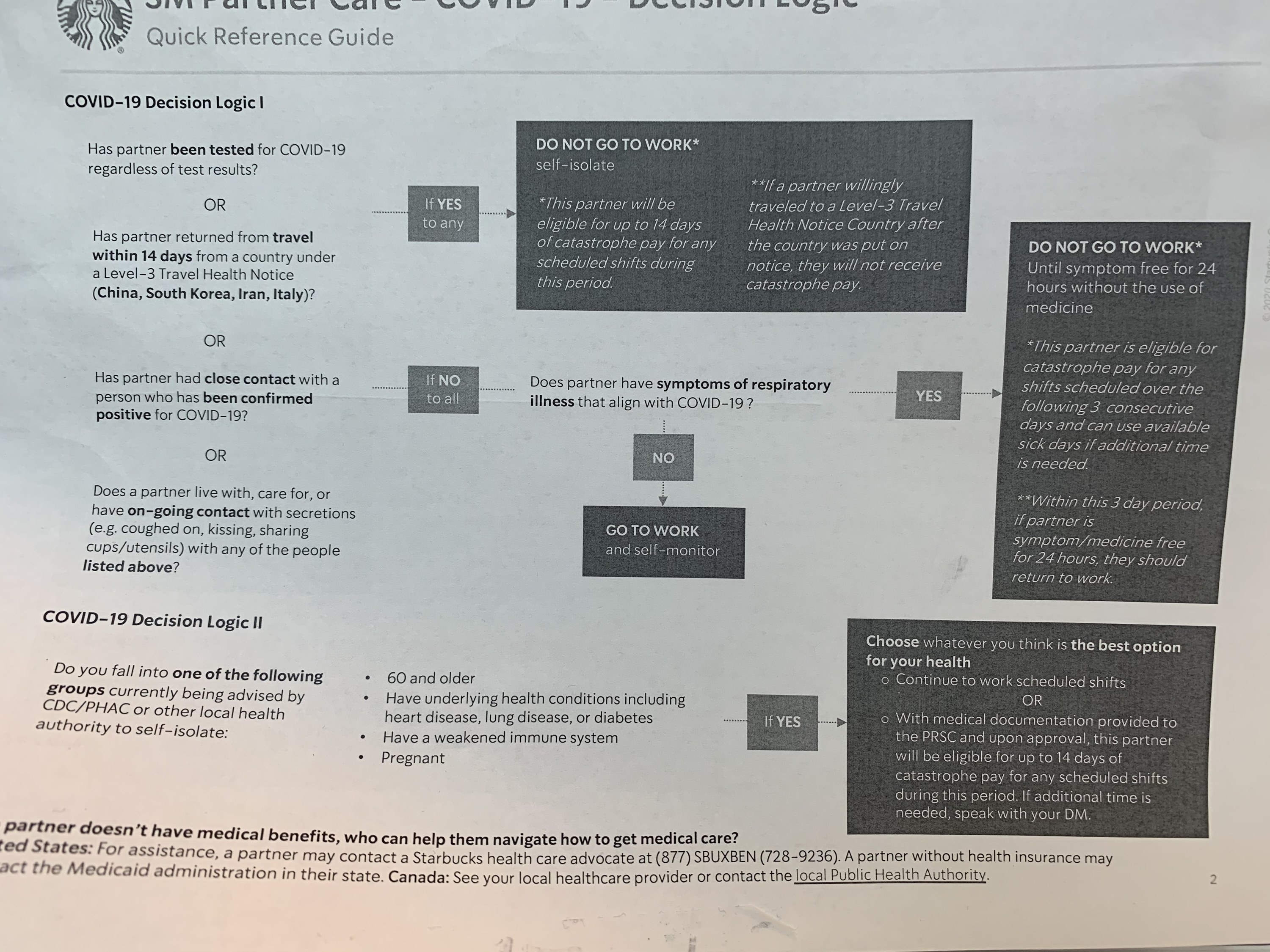
The next day, March 20, came the big shift: Starbucks extended catastrophe pay to 30 days for any employee who made the “personal choice to stay at home.”
The following day, as the number of confirmed US cases passed 33,000, the company added the $3-an-hour pay raise to employees who continue to work. More than a dozen employees said that despite the chance for a raise, they and most of their coworkers were planning to immediately take their 30 days. “Who wouldn't, at this point?” one said.
This week, as confirmed US cases hit 44,000, Starbucks CEO Kevin Johnson praised the employees who continued to work shifts: “I am proud of how Starbucks partners around the world are rising to the occasion and demonstrating our resilience and our commitment to the communities we serve.”
Some of them told BuzzFeed News that they felt they didn’t have much of a choice. Paid leave at Starbucks is typically based on an employee’s average work hours in recent weeks, which for many employees means as low as half their normal paycheck, since hours at most branches have been shortened this month.
“Why is that store operating if a partner is getting tested? What if I sent a barista to cover that shift, and my partner contracted the virus?”
The Starbucks spokesperson said that the 30-day catastrophe pay isn’t based on recent workweeks but was unable to say how it is calculated. Store managers who spoke to BuzzFeed News said the company had yet to communicate the details of the policy to them.
One 21-year-old barista in Colorado said the extra $3-an-hour was enough to sway her to keep working. Her boyfriend was laid off from his fast-food job last week, and her wages now have to cover both of their rent payments, as well as her car payment, all totaling around $1,400 a month, not including food, gas, and any other expenses. Her normal monthly wages added up to around $1,460, she said. With the slight bump in pay, she hopes she can keep them afloat until something turns around, though she is not sure when that might be or what exactly it will look like.
“It’s a crappy situation all around, but it at least takes a little bit of the weight off to have the option of getting paid even if I decide I’m worried about coming in,” she said. “Also, I’m spending less on gas because I don’t go anywhere except to work. I haven’t filled up my tank in about three weeks, and I’m still above half.”
She has worked retail jobs since she was 16 and supported herself financially since she was 18. She has around $5,000 in student debt to pay down for a college she hasn’t yet gotten a degree from, having taken a leave of absence to pick up more shifts. She isn’t sure when she’ll have time to return to school as long as she’s working full time.
For now, all she can do is clock in and hope for the best. ●


